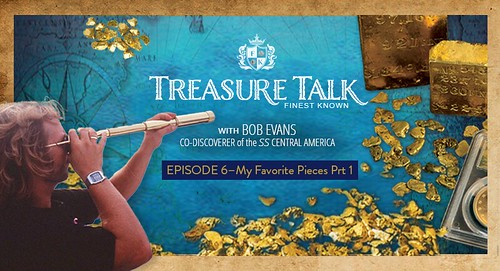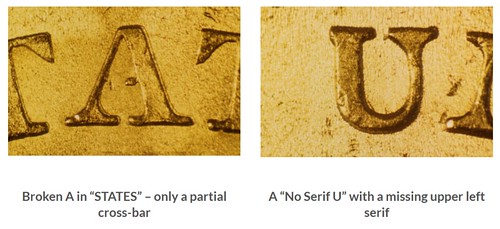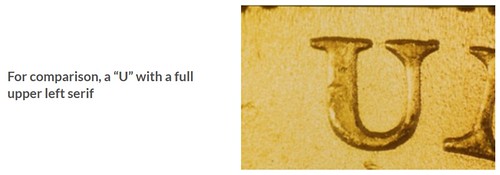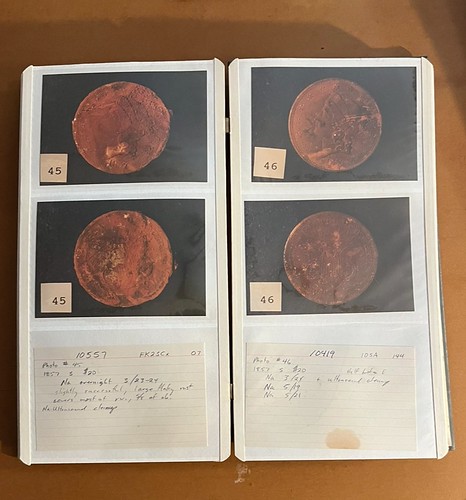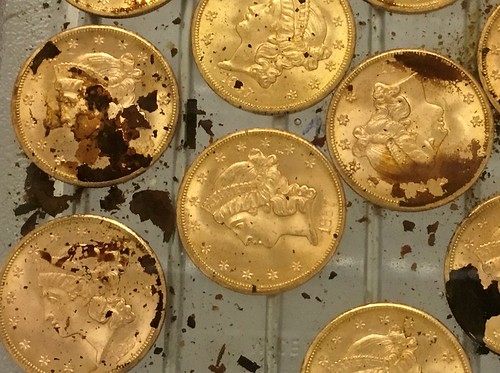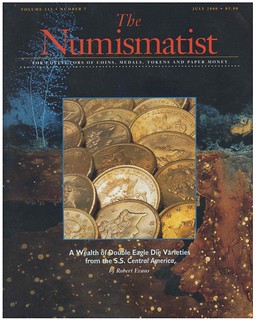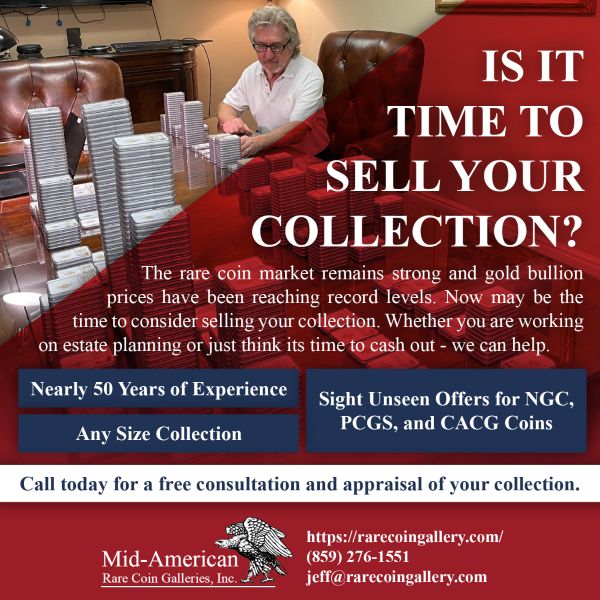
PREV ARTICLE
NEXT ARTICLE
FULL ISSUE
PREV FULL ISSUE
TREASURE TALK WITH BOB EVANS, EPISODE 6.1In January, our good friend Bob Evans began publishing a series of blog articles on the Finest Known website detailing his experience as co-discoverer and curator of the treasures recovered from the wreck of the S.S. Central America. Subject of the book "Ship of Gold", many exhibits, countless interviews and articles, books and auction catalogs feature the legendary haul of gold coins, bars, nuggets, gold dust and more from the 1857 shipwreck. Here's another excerpt - see the complete article online. -Editor It is almost laughable now, in the wake of our discovery, but before the SSCA treasure entered the market, the Professional Coin Grading Service (PCGS,) had graded only 315 mint-state Type I double eagles dated 1850 – 1857. Curating and submitting the SSCA treasure in 2000 – 2001 added 4,042 mint-state 1857-S, 255 mint-state 1856-S, 58 mint-state 1855-S, and 4 mint-state 1854-S to the mix.
When I showed numismatic expert Walter Breen examples of the treasure at Christie's in 1990 (see Treasure Talk 3: Part 2), he was thrilled to see such And so, I was armed with a new awareness. As I curated a couple hundred coins during the 90s, determining the reverse (tails side) die varieties became part of the sport, like fossil collecting or birding, trying to find new species (in this case die varieties), and tallying the species I had seen. Early in the process, it became obvious that one die variety was abundant above all others, and that coins of that variety were downright common in very high grades. These coins all had distinctive marks, a couple of short, sharp, raised lines touching the left edge of the shield. It appears that somewhere along the line of production, someone had a minor accident with this particular reverse die, dropping a punch or chisel on it, or dropping the die itself onto something hard, thus marking the tool in this distinctive way, as well as all the coins made from that die. My lab work in the 90s was constrained by limits on the numbers of coins I could safely, securely, and legally handle at our facilities in Columbus, all movements tracked and reported to Judge Richard B. Kellam in Federal District Court in Norfolk, VA. And so, I only curated a couple hundred coins during that decade, experimenting with techniques, and learning what I could from the coins I conserved and examined in detail. There was something deeply satisfying about taking objects that looked like pieces of dirt, watching the dirt fall away, and seeing the gems revealed within. Each coin, encased in its rusty matrix, held the potential for discovery, a mystery waiting to be solved. As the individual mysteries resolved, the statistics started to pile up, revealing yet another story.
When I first started in the lab in California, I told Dwight Manley about the existence of reverse die varieties, and that I thought they could be determined. He enthusiastically said They also had plenty of other work pounding on the door. So, since I invented the system, I was the guy to apply it, and I did so for all sixty-four hundred S-Mint double eagles we had found in the treasure. I'm glad I took what Walter Breen introduced to me and managed to develop a better understanding of the Mint's industry as applied toward creating these coins. The subject can go deeper than I wish to here.
Looking back on this objectively after a quarter century, I am a little amazed they wanted me to do this. I'm sure Dwight Manley had no trouble getting the attention of the American Numismatic Association, the organization publishing The Numismatist, and to which he gave generous financial support. He saw my photographs and my evidence in the lab, and he was as eager as I was to share whatever variety could be found in this enormous hoard of double eagles. But I was completely unpublished in this field! The confidence that both Dwight and The Numismatist Editor Barbara Gregory placed in me as I wrote and submitted this article is something for which I will always be grateful. The article received a wonderful award that year, First Place in the Wayte and Olga Raymond Award for contributions to US Numismatics. As a result, the numismatic community at large began to see me as some kind of expert, which I suppose I was, at this tiny little specific subject within the enormous field of numismatics. But at coin shows I sometimes felt as if I was swimming in an ocean of knowledge, trying my best to keep afloat as I learned about new subject after new subject. When speaking to groups of young people, I often asked them to pull a coin from a nearby pocket and take a look at it. Then I say, "congratulations - you're a numismatist!" Numismatics is the study of coins, and study begins with looking - something that most people rarely do. When one looks, one begins to notice the details and differences, and that's what separates numismatists from everyone else. Congratulations, Bob - you became a numismatist! -Editor
To read the complete article, see:
For the complete series, see:
To read the earlier E-Sylum article, see:
Wayne Homren, Editor The Numismatic Bibliomania Society is a non-profit organization promoting numismatic literature. See our web site at coinbooks.org. To submit items for publication in The E-Sylum, write to the Editor at this address: whomren@gmail.com To subscribe go to: Subscribe All Rights Reserved. NBS Home Page Contact the NBS webmaster 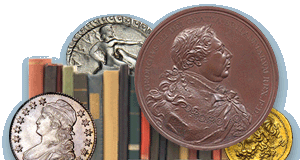
|
